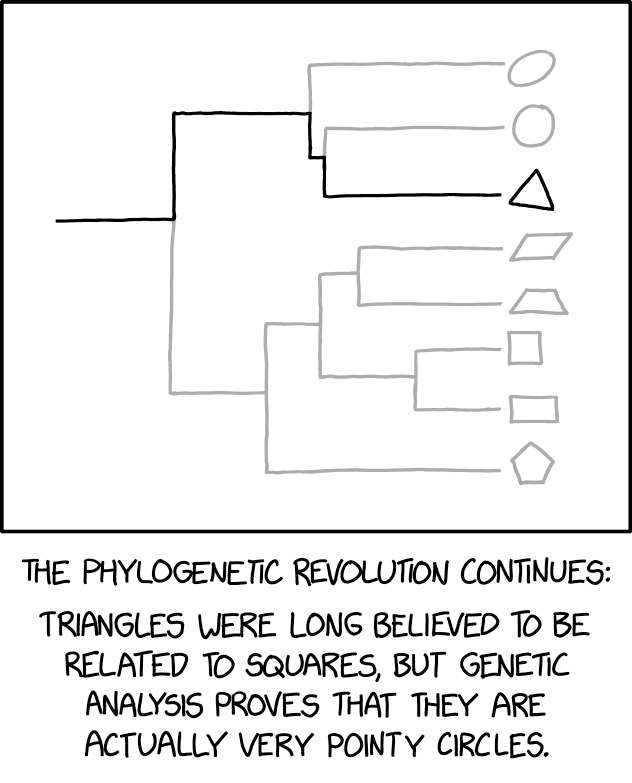Geometriphylogenetics
Language Log 2024-11-12
Mouseover title: "There's a maximum likelihood that I'm doing phylogenetics wrong."
It's not that Randall is "doing phylogenetics wrong", but rather than he's applying it to an inappropriate problem.
The OED's etymology for phylogeny is
< German Phylogenie (E. Haeckel Gen. Morphol. der Organismen (1866) I. iii. 57) < Phylum phylum n. + ‑o‑ ‑o‑ connective + ‑genie ‑geny comb. form.
The Greek source for phylum is φῦλον, glossed as "race, tribe, or class" and various related concepts. And the OED's earliest English citation for phylum is from T.H. Huxley, Proceedings of Zoological Society, in 1868:
The relations of the different groups should be capable of representation by a genealogical tree, or phylum as Haeckel calls it in his remarkable ‘Generelle Morphologie’.
What all of these have in common is the idea of a tree-structured taxonomy. In the case of animals, this is pretty much guaranteed by the nature of generation-to-generation descent — though the situation for bacteria is different, since different lineages can exchange genetic material across well-separated geneological branches.
Of course, viruses (and human biologists) can do a version of the same thing. And there's a long history of debate about wave models versus tree models of linguistic evolution.
Anyhow, there's no basis — in math or psychology — for a single well-defined tree model for geometric figures. (And of course "genetic analysis" is not coming to the rescue.)
There are plenty of kinds of cultural evolution where it's clear that the history is not tree-structured:
"The evolution of the cocktail", 7/20/2010 "Folktale phylogeny". 1/25/2016
